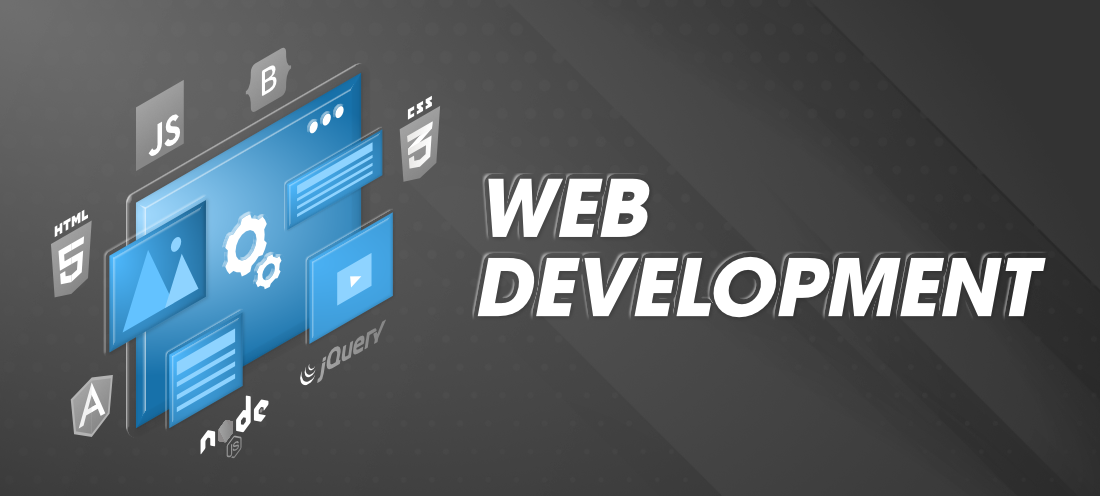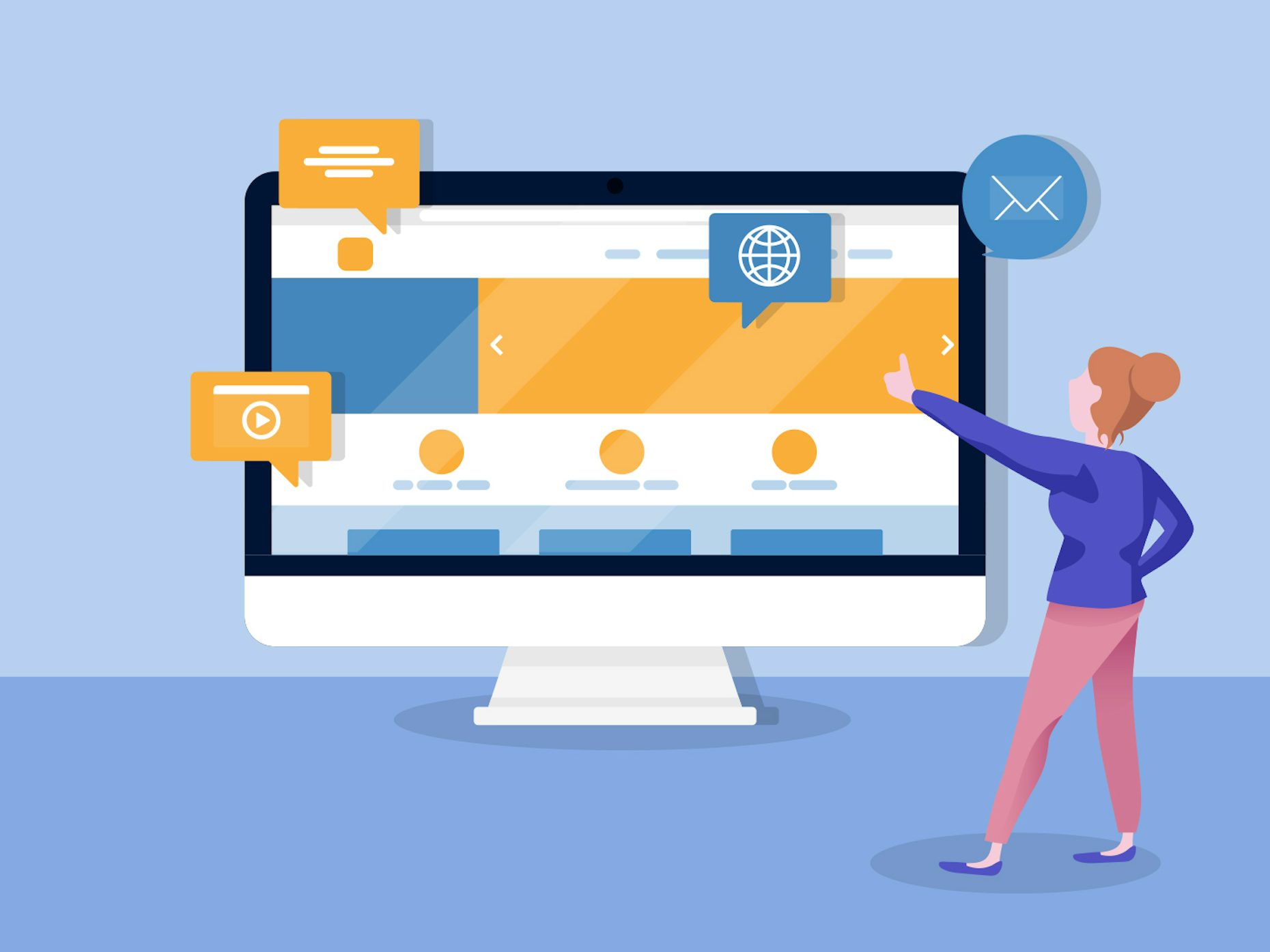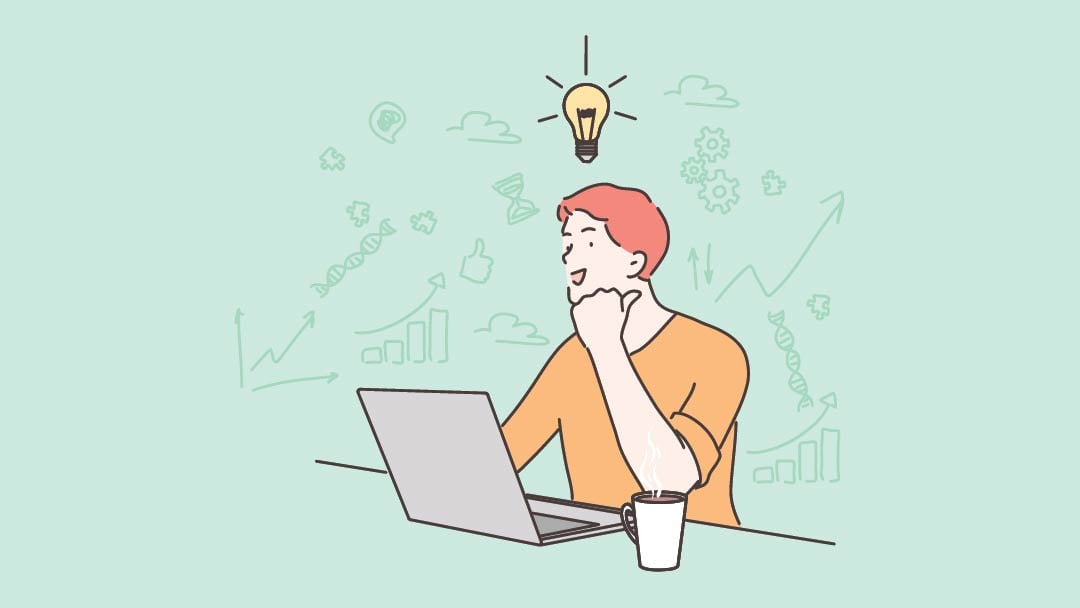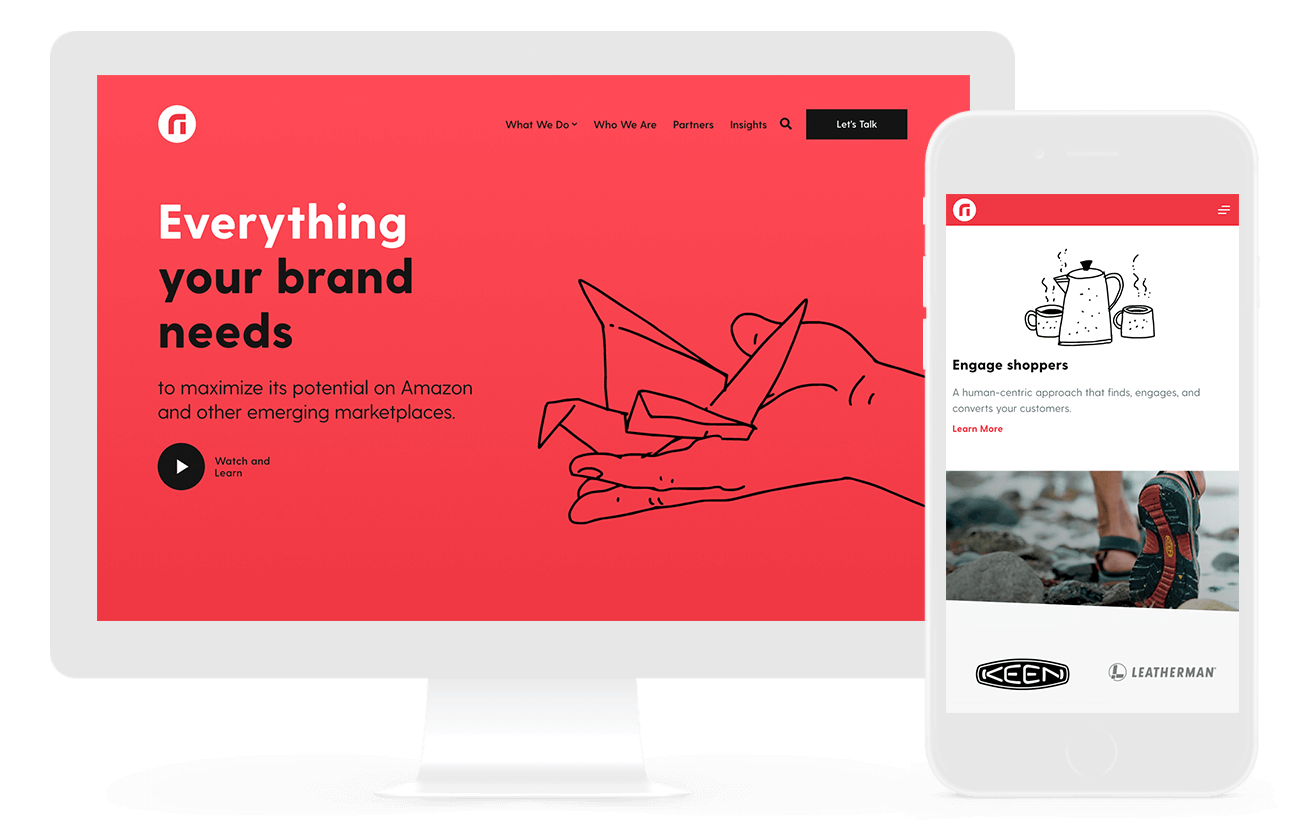All Categories
Featured
Table of Contents
- – Top Web Design Companies - Find Web Designers ...
- – Web Design Tools & Software - Webflow Tips an...
- – What Is Web Design? The Ultimate Guide To Web...
- – Learn Web Design With Online Courses, Classes...
- – Website Design - Best Ecommerce Web Design By...
- – Pueblo Web Design Tips and Tricks:
- – Webpage Design (Article) - Further Learning ...
- – Sustainable Web Design: Home Tips and Tricks:
- – Why Web Design Is Dead - - Ux Magazine Tips ...
- – Web Design Company In Orlando, Florida And B...
- – Web Page Design: A Comprehensive Guide - Ado...
Top Web Design Companies - Find Web Designers Here Tips and Tricks:
Quick summary Use and the energy, not the visual design, figure out the success or failure of a site. Considering that the visitor of the page is the only person who clicks the mouse and therefore decides everything, user-centric design has actually developed as a standard technique for effective and profit-oriented web design - web design frederick md.
and the energy, not the visual style, determine the success or failure of a website. Considering that the visitor of the page is the only individual who clicks the mouse and for that reason decides everything, user-centric style has become a basic technique for effective and profit-oriented website design. After all, if users can't utilize a function, it may as well not exist.
g. where the search box must be positioned) as it has actually currently been carried out in a variety of short articles; instead we concentrate on the approaches which, used appropriately, can result in more advanced style choices and simplify the process of viewing presented details. Please observe that you might be interested in the usability-related articles we've released before: Principles Of Excellent Website Design And Effective Web Design Guidelines, In order to utilize the principles correctly we initially require to comprehend how users connect with websites, how they think and what are the standard patterns of users' habits.
Web Design Tools & Software - Webflow Tips and Tricks:
Visitors look at each brand-new page, scan a few of the text, and click the first link that captures their interest or slightly looks like the thing they're trying to find. There are large parts of the page they do not even look at. A lot of users browse for something fascinating (or helpful) and clickable; as quickly as some promising prospects are discovered, users click.
If a page provides users with premium content, they are ready to compromise the material with ads and the design of the site. This is the reason that not-that-well-designed sites with top quality content gain a great deal of traffic over years. Content is more crucial than the style which supports it.

Very easy concept: If a website isn't able to meet users' expectations, then designer failed to get his task done effectively and the company loses money. The greater is the cognitive load and the less instinctive is the navigation, the more ready are users to leave the site and search for alternatives.
What Is Web Design? The Ultimate Guide To Website Design ... Tips and Tricks:
Neither do they scan website in a linear fashion, going sequentially from one website area to another one. Rather users satisfice; they pick the first reasonable choice. As quickly as they find a link that appears like it might cause the goal, there is an excellent opportunity that it will be right away clicked.
It does not matter to us if we comprehend how things work, as long as we can use them. If your audience is going to act like you're developing billboard, then style great signboards." Users wish to be able to control their internet browser and rely on the consistent data discussion throughout the site.
If the navigation and site architecture aren't intuitive, the variety of enigma grows and makes it harder for users to understand how the system works and how to receive from point A to point B. A clear structure, moderate visual clues and easily recognizable links can help users to discover their course to their objective.
Learn Web Design With Online Courses, Classes, & Lessons Tips and Tricks:

Because users tend to check out websites according to the "F"-pattern, these 3 declarations would be the very first elements users will see on the page once it is loaded. The style itself is easy and instinctive, to understand what the page is about the user needs to browse for the answer.
When you have actually achieved this, you can interact why the system is useful and how users can benefit from it. Do Not Squander Users' Patience, In every task when you are going to provide your visitors some service or tool, attempt to keep your user requirements very little.
Novice visitors want to, not filling long web kinds for an account they might never ever use in the future. Let users check out the website and find your services without requiring them into sharing personal information. It's not sensible to force users to get in an e-mail address to test the feature.
Website Design - Best Ecommerce Web Design By Shopify Tips and Tricks:
Stikkit is an ideal example for an user-friendly service which requires almost absolutely nothing from the visitor which is inconspicuous and comforting. And that's what you want your users to feel on your website. Apparently, Termite requires more. However the registration can be done in less than 30 seconds as the kind has horizontal orientation, the user does not even need to scroll the page.
A user registration alone is enough of an impediment to user navigation to reduce incoming traffic. 3. Manage To Focus Users' Attention, As sites offer both static and dynamic material, some elements of the user interface bring in attention more than others do. Obviously, images are more distinctive than the text just as the sentences marked as bold are more attractive than plain text.
Focusing users' attention to specific locations of the website with a moderate usage of visual components can help your visitors to obtain from point A to point B without thinking about how it actually is expected to be done. The less concern marks visitors have, the they have and the more trust they can develop towards the company the site represents.
Pueblo Web Design Tips and Tricks:
4. Make Every Effort For Function Exposure, Modern web designs are typically slammed due to their technique of assisting users with aesthetically appealing 1-2-3-done-steps, large buttons with visual impacts and so on. From the design viewpoint these aspects really aren't a bad thing. On the contrary, such as they lead the visitors through the website content in a really easy and easy to use method.
The website has 9 primary navigation options which show up at the first glimpse. The option of colors might be too light. is a basic principle of successful user interface design. It does not really matter how this is accomplished. What matters is that the material is well-understood and visitors feel comfy with the way they communicate with the system.
Instead a rate: just what visitors are looking for. An optimal solution for effective writing is touse short and succinct expressions (come to the point as quickly as possible), usage scannable design (categorize the content, utilize numerous heading levels, use visual elements and bulleted lists which break the flow of uniform text blocks), usage plain and objective language (a promo does not need to sound like ad; give your users some affordable and unbiased factor why they need to use your service or remain on your website)6.
Webpage Design (Article) - Further Learning - Khan Academy Tips and Tricks:
Users are seldom on a website to delight in the design; additionally, most of the times they are trying to find the details in spite of the style - web design frederick md. Pursue simpleness instead of intricacy. From the visitors' point of view, the very best website design is a pure text, with no ads or further content blocks matching exactly the inquiry visitors utilized or the content they have actually been searching for.
Finch clearly presents the information about the site and offers visitors an option of options without overcrowding them with unnecessary material. 7. Don't Hesitate Of The White Space, Really it's truly tough to overstate the significance of white area. Not just does it assist to for the visitors, but it makes it possible to view the details provided on the screen.
Complex structures are more difficult to read, scan, examine and work with. If you have the option between separating two design segments by a visible line or by some whitespace, it's typically better to use the whitespace option. (Simon's Law): the better you handle to provide users with a sense of visual hierarchy, the easier your content will be to perceive.
Sustainable Web Design: Home Tips and Tricks:
The very same conventions and rules should be used to all elements.: do the most with the least quantity of hints and visual aspects. Clearness: all components ought to be created so their meaning is not unclear.
Conventions Are Our Pals, Traditional style of website components does not lead to a boring website. As they reduce the finding out curve, the need to figure out how things work. It would be a functionality nightmare if all sites had various visual discussion of RSS-feeds. That's not that different from our regular life where we tend to get used to basic concepts of how we arrange data (folders) or do shopping (positioning of items).
understand what they're expecting from a website navigation, text structure, search placement etc. A case in point from usability sessions is to translate the page in Japanese (assuming your web users don't understand Japanese, e. g. with Babelfish) and offer your use testers with a task to find something in the page of various language.
Why Web Design Is Dead - - Ux Magazine Tips and Tricks:
Test Early, Test Typically, This so-called TETO-principle should be used to every web style job as usability tests often supply into significant problems and issues related to an offered layout. Test not too late, not too little and not for the incorrect factors.
Some crucial points to bear in mind: according to Steve Krug, and testing one user early in the project is much better than testing 50 near completion. Accoring to Boehm's first law, errors are most regular throughout requirements and style activities and are the more expensive the later they are eliminated.
That suggests that you create something, test it, fix it and then check it once again. There may be problems which haven't been discovered throughout the preliminary as users were practically obstructed by other problems. usability tests. Either you'll be indicated the issues you have or you'll be indicated the lack of major design defects which is in both cases a helpful insight for your task.
Web Design Company In Orlando, Florida And Bangor, Maine Tips and Tricks:

This holds for designers as well. After you've dealt with a website for few weeks, you can't observe it from a fresh viewpoint any longer. You understand how it is developed and for that reason you know precisely how it works you have the knowledge independent testers and visitors of your site wouldn't have.
It can be linked to other locations such as graphic style, user experience, and multimedia arts, however is more appropriately seen from a technological perspective. It has become a large part of individuals's daily lives. It is hard to imagine the Internet without animated graphics, various designs of typography, background, videos and music.

During 1991 to 1993 the Web was born. Text-only pages could be viewed using a simple line-mode web browser. In 1993 Marc Andreessen and Eric Bina, produced the Mosaic internet browser. At the time there were several browsers, nevertheless most of them were Unix-based and naturally text heavy. There had actually been no integrated method to graphic design components such as images or noises.
Web Page Design: A Comprehensive Guide - Adobe Xd Ideas Tips and Tricks:
The W3C was created in October 1994 to "lead the World Wide Web to its complete potential by developing common protocols that promote its advancement and ensure its interoperability." This prevented any one company from monopolizing a propriety browser and programming language, which might have modified the result of the Web as a whole.
As this has occurred the technology of the web has actually also moved on. There have actually also been considerable modifications in the method people utilize and access the web, and this has actually altered how websites are created.
Learn more about Lovell Media Group LLC or TrainACETable of Contents
- – Top Web Design Companies - Find Web Designers ...
- – Web Design Tools & Software - Webflow Tips an...
- – What Is Web Design? The Ultimate Guide To Web...
- – Learn Web Design With Online Courses, Classes...
- – Website Design - Best Ecommerce Web Design By...
- – Pueblo Web Design Tips and Tricks:
- – Webpage Design (Article) - Further Learning ...
- – Sustainable Web Design: Home Tips and Tricks:
- – Why Web Design Is Dead - - Ux Magazine Tips ...
- – Web Design Company In Orlando, Florida And B...
- – Web Page Design: A Comprehensive Guide - Ado...
Latest Posts
53 Web Design Tools To Help You Work Smarter In 2022 Tips and Tricks:
Why Is Web Design Important? - 6 Reasons To Invest In Site ... Tips and Tricks:
What Is Web Design, How To Do It Right And Best Skills - Rock ... Tips and Tricks:
More
Latest Posts
53 Web Design Tools To Help You Work Smarter In 2022 Tips and Tricks:
Why Is Web Design Important? - 6 Reasons To Invest In Site ... Tips and Tricks:
What Is Web Design, How To Do It Right And Best Skills - Rock ... Tips and Tricks: